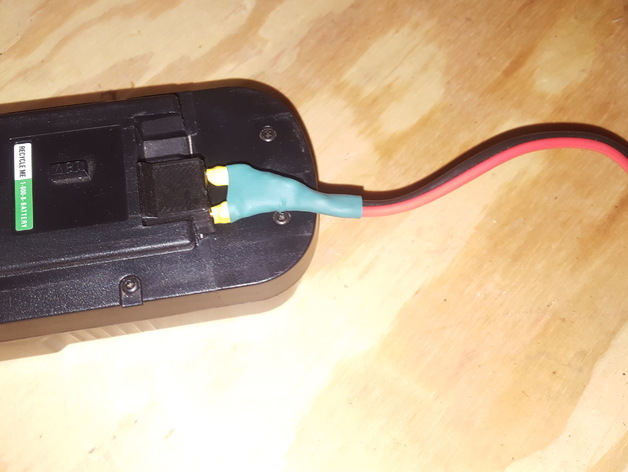
B&D 18V Battery Connector
thingiverse
A Convenient Power Source Adapter for Black and Decker 18V Battery Packs This handy adapter lets you easily tap into one of these batteries as a power source for electronics projects. I created this design because I wanted a simple way to utilize the battery with a plug that left it unaltered, allowing it to still be used in B&D tools and recharged using their charger. I use the adapter to power either a low-cost buck or boost converter, enabling me to deliver several amps at output voltages ranging from a few volts up to over 30 V. Examples of this include Buck and Boost converters. The pictures provided show the other end of the wire with PowerPole connectors attached for easy use on a workbench. Note that PowerPoles are stacked vertically in an unconventional orientation, distinguishing them from standard ham gear configuration. This prevents accidental plugging into equipment intended only for 12V/13.8V. The OpenSCAD script is included alongside the STL file. Print Settings Printer Brand: Printrbot Printer: Simple Black Rafts: Doesn't Matter Supports: No Resolution: 0.2 mm Infill: 15-30% Notes: I printed the adapter with the deep, narrow notch facing DOWN; it still prints fine without supports. It's possible that the model may print better with the rectangular holes facing DOWN on the print bed. If you have better luck one way or the other, let me know in the comments. Assembly Instructions This connector was designed to be assembled using solid 12 AWG wire. This can easily be obtained from a piece of 12/2 wire commonly used for house wiring. Strip all insulation from two wires that are just slightly longer than the connector length. Avoid bending the wires; keep them as straight as possible. On each of the two wires, take a metal file (or sandpaper) and file down one end so it's wedge shaped. The goal is not to sharpen the tip, but rather to remove one side of the cylindrical cross-section on the end of the wire to prevent battery terminals from snagging when inserted. The wire will be inserted in the small holes at the back. Orient each wire so that the slope you created on the end faces the inside of each rectangular cavity; this allows the battery terminal to easily slide past the tip of the wire. The connector is designed so that the wires fit relatively snugly, so you may need a pair of pliers to push in each wire until it reaches the end of the internal channel. Test fit the connector on a battery to see if it slides on and off smoothly. If everything works out, the length of wire exposed in each opening will be pressed firmly against a battery terminal when plugged in, providing a solid connection and sufficient friction to prevent accidental disconnection. I think this approach works quite well. If the connector fits on the battery, unplug it and solder a longer wire to each terminal wire sticking out the back of the connector. You'll notice in the pictures provided that I used a short piece of red/black zipwire (making sure to attach red to the + terminal and black to the - terminal) to make the connection. I also used heat shrink tubing to help insulate the wires and solder joints. Disclaimer Like any do-it-yourself project, the quality of the constructed item can vary widely depending on the skills of the builder. This item worked well for me, but it may not be suitable for your purposes; use at your own risk.
With this file you will be able to print B&D 18V Battery Connector with your 3D printer. Click on the button and save the file on your computer to work, edit or customize your design. You can also find more 3D designs for printers on B&D 18V Battery Connector.
